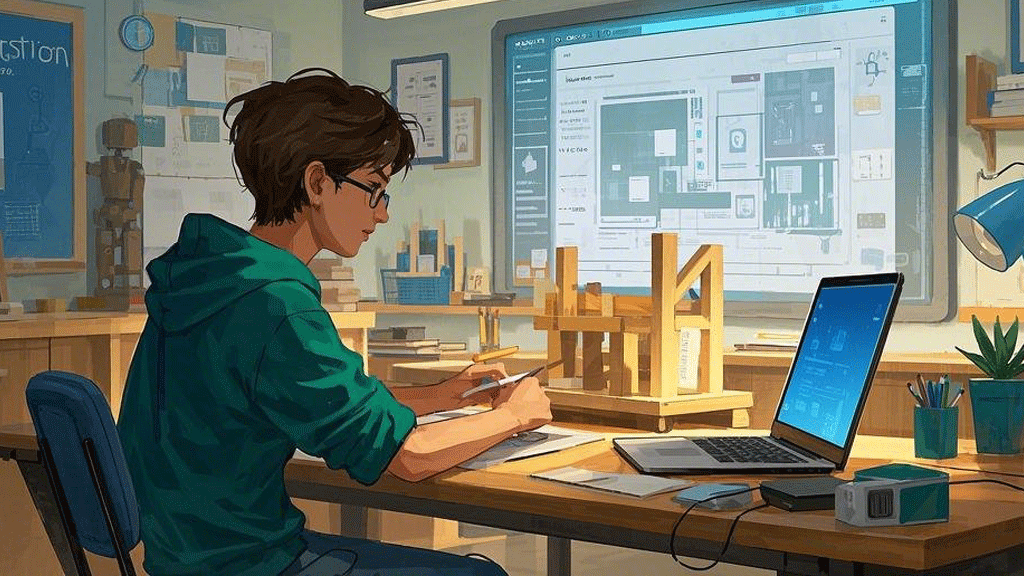From Pre-Tech to UX: The Overlooked Connection
When we reflect on our school days, certain subjects stand out—one of them being Pre-Technical Skills (Pre-Tech). In Ghanaian basic schools, Pre-Tech was more than just a class; it was an opportunity to develop critical thinking, creativity, and problem-solving. Interestingly, these are the same skills that define a successful UX Designer today.
In this article, we’ll explore how Pre-Tech plays a crucial role in preparing individuals for UX Design careers and why problem-solving skills remain vital in the digital age.
The Core of Pre-Tech: Problem-Solving at Its Best
Pre-Tech was introduced to familiarize students with technical fields like carpentry, metalwork, and electronics. However, beyond learning trade skills, the subject instilled an essential ability: solving problems through design.
Key Problem-Solving Aspects of Pre-Tech:
- Hands-on Learning: Students were tasked with designing solutions for real-world problems.
- Creativity & Innovation: Encouraged to think outside the box, students created functional artifacts.
- Logical Thinking: Breaking down a problem into smaller, manageable parts—a critical UX skill.
These foundational abilities mirror the design thinking process used in UX Design today.
How Pre-Tech Skills Transfer to UX Design
A UX Designer creates digital products that are intuitive, user-friendly, and solve real-world problems. If you enjoyed Pre-Tech, you likely already have some UX-related skills.
Overlapping Skills Between Pre-Tech & UX Design:
| Pre-Tech Skills | UX Design Application |
|---|---|
| Problem-Solving | Identifying and solving user pain points. |
| Creativity | Designing intuitive interfaces. |
| User-Centered Approach | Creating solutions tailored to user needs. |
| Prototyping & Testing | Iterating designs based on feedback. |
UX Design isn’t just about making things look good—it’s about functionality and usability. If you’ve ever designed a Pre-Tech artifact to solve a problem, you’ve already engaged in user experience thinking!
The Importance of Problem-Solving Skills in UX & Beyond
Whether in tech, business, or daily life, problem-solving is an indispensable skill. Many of today’s top tech companies prioritize problem-solving ability over technical skills when hiring.
Why Problem-Solving Matters:
✔ Helps navigate challenges efficiently
✔ Encourages innovation and creativity
✔ Leads to better decision-making
✔ Essential for career growth in any field
Want to enhance your problem-solving skills? Consider reading Design Thinking: A Quick Guide to learn more about structured problem-solving in UX Design.
How to Transition from Pre-Tech to UX Design
If you have a background in Pre-Tech and want to explore UX Design, here’s a roadmap to get started:
1. Learn UX Fundamentals
Start with online courses from platforms like Coursera or Interaction Design Foundation.
2. Practice Design Thinking
Take everyday problems and think of user-centered solutions.
3. Master UX Tools
Learn tools like Figma, Adobe XD, or Sketch to create digital prototypes.
4. Build a Portfolio
Create a portfolio website showcasing design projects. Check out this guide for inspiration.
5. Network & Gain Experience
Join UX communities like UX Design on Reddit or LinkedIn UX Groups.
Final Thoughts
Pre-Tech may not have seemed like a career-defining subject at the time, but its problem-solving principles are the backbone of UX Design. If you enjoyed creating solutions in Pre-Tech, UX might be a natural career fit for you.
Ready to dive deeper? Check out our Beginner’s Guide to UX Design and start your journey today!
📌 Frequently Asked Questions (FAQs)
Q: Do I need a degree to become a UX Designer?
A: No, many UX Designers are self-taught through online courses and projects.
Q: What industries hire UX Designers?
A: UX Designers work in tech, finance, healthcare, e-commerce, and more.
Q: How long does it take to transition into UX Design?
A: With consistent learning and practice, you can start in 6-12 months.
🚀 Want more insights on UX and design? Subscribe to our newsletter!


